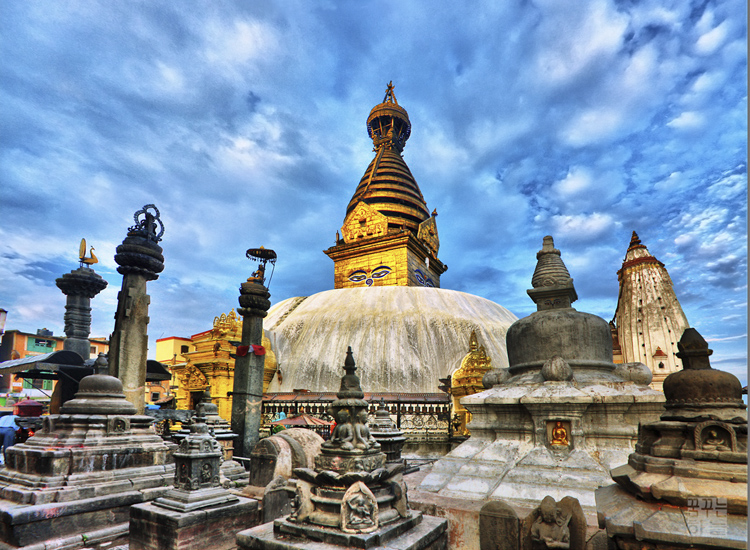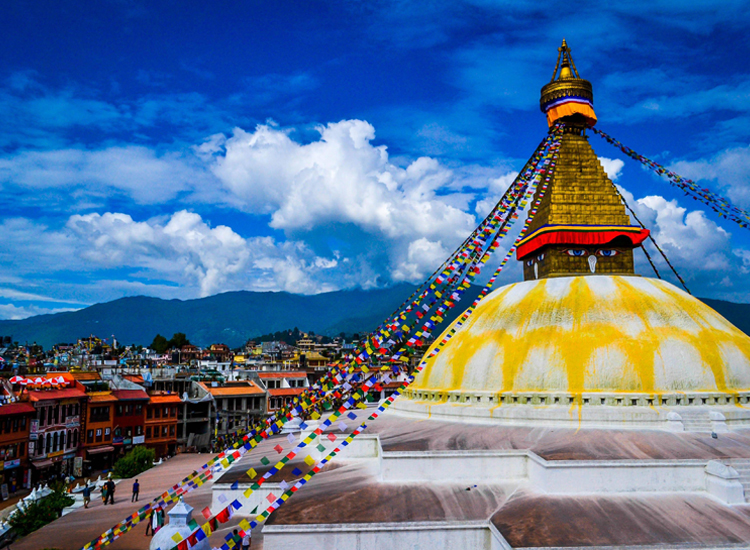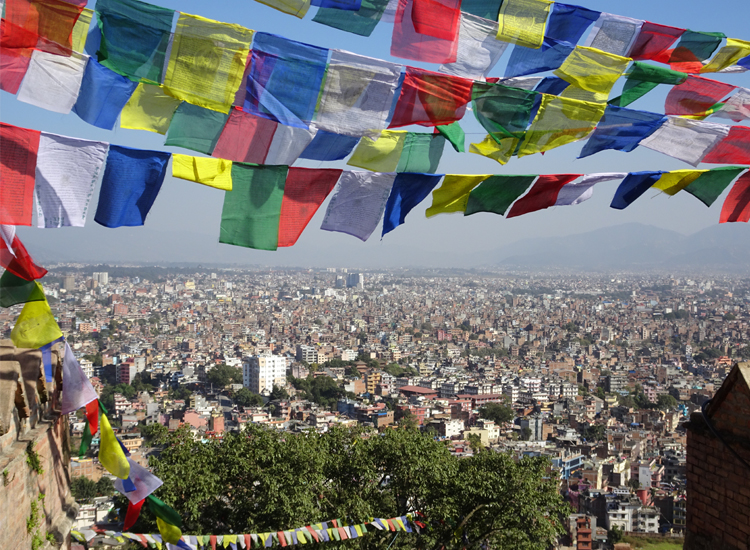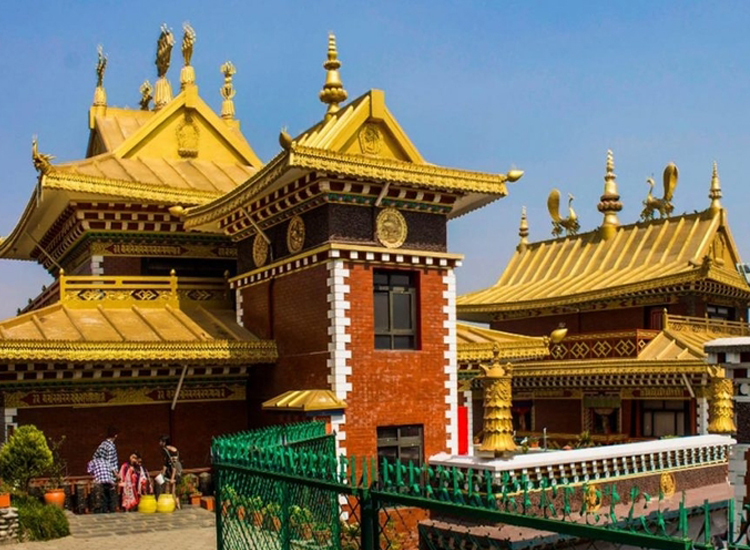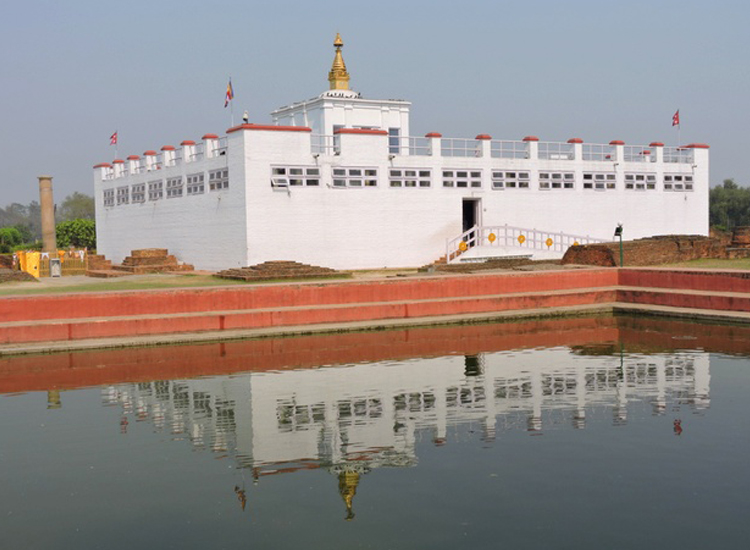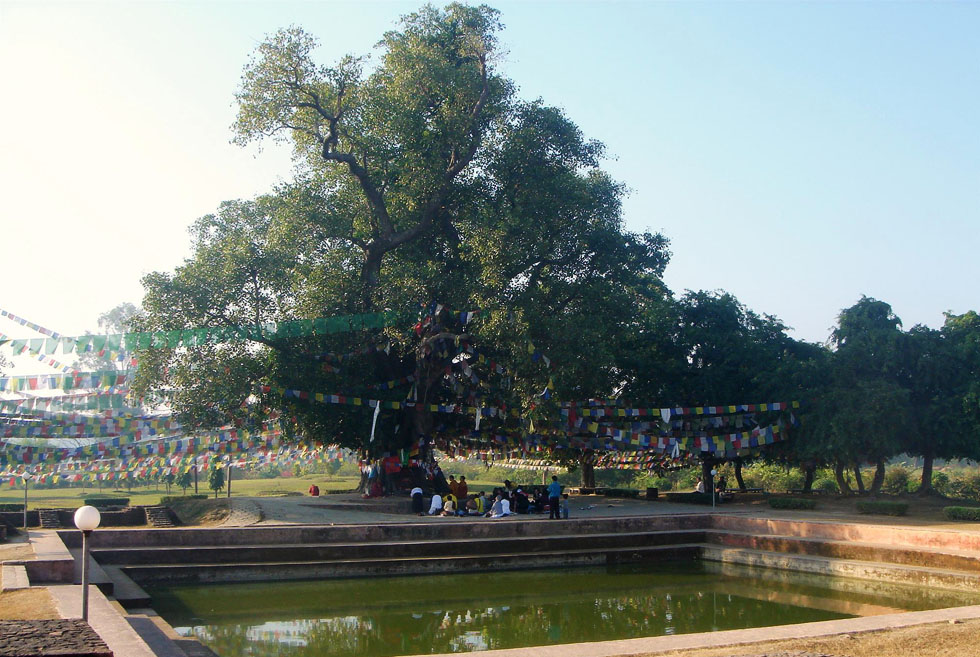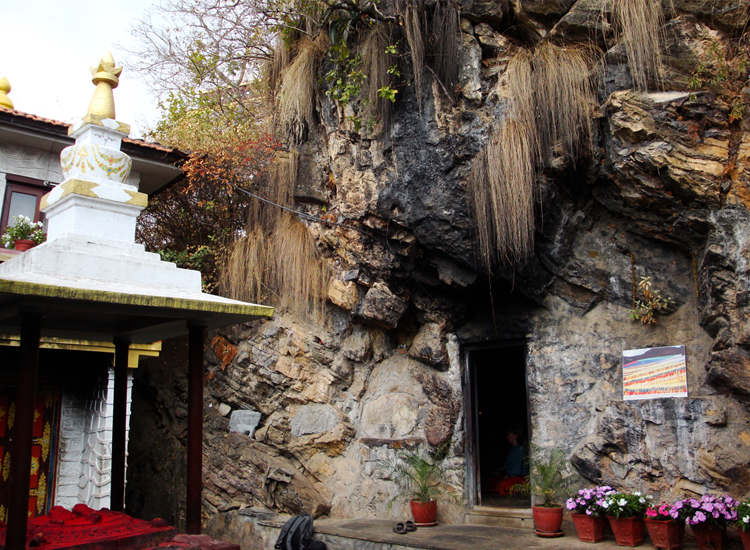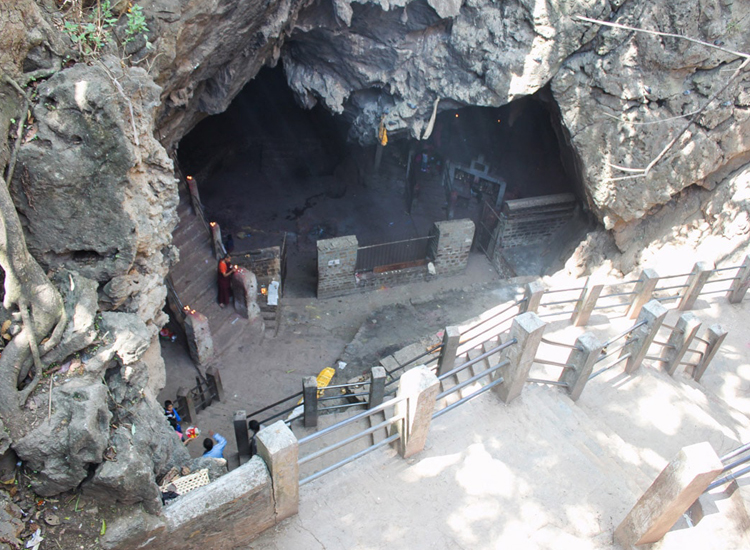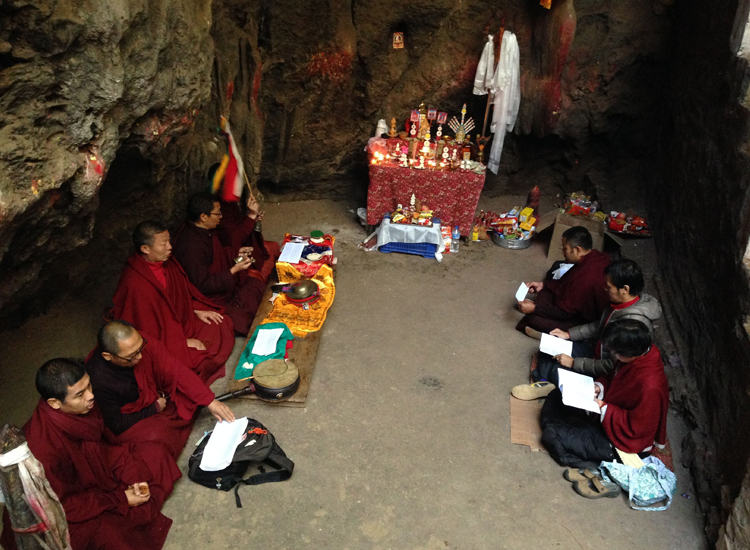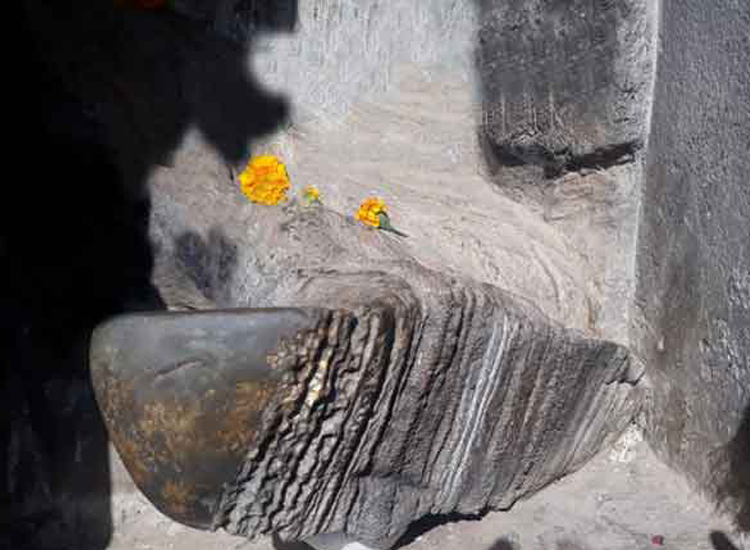Buddhist Pilgrimage Tour in Nepal is one of our favourite tour and we’d be delighted to help you explore this impressive region in Nepal.
Our tour to Buddhist pilgrimage sites introduces the great Buddhist master Guru Rinpoche (Guru Padmasambhava) widely known as the second Buddha across the world. In this tour, we'll explore the caves, where Guru Padmasambhava attained the Vidyadhara of longevity, put an end to demons, & got final enlightened. We'll also explore the birthplace of Gautam Buddha and where he sacrifices himself to the hungry tigress and the cubs.
Buddhist Pilgrimage Tour in Nepal is one of the best tour packages to explore the Buddhist religious sites in Nepal. Besides, travelers will see the Buddhist monks reciting religious slogans in maroon robes with prayer wheels on their hands devoted to Buddhism. For those who are interested to learn about Buddhism, better to come to the country where Buddha was born. There are various monasteries and institutions where travelers can learn more about Buddhism, meditation. Buddhism is widely followed in Nepal especially in some ethnic groups like Magar, Newar, Gurung, Rai, and Tamang.
We'll visit the sacred Buddhist sites in and outside the Kathmandu valley. Buddhist pilgrimage tour starts from Kathmandu where we will visit, the largest Buddhist stupa ‘Boudhanath Stupa”, the monkey temple “Swayambhunath Stupa”. Buddhist Pilgrimage Tour in Nepal is one of the best tour packages designed to acquaint with Buddhism and its way of life. Nepal has hundreds of meditation caves, monasteries, and stupas related to Bodhisattvas, Siddhas and Buddha. The sightseeing program will start from Swayambhunath Stupa, most ancient and enigmatic of all the holy shrines in Kathmandu valley.
Day 01: Arrival in Kathmandu (1350m/4429 ft. ), transfer to hotel
Flying into Kathmandu is a memorable experience with the Himalaya spread out. Timepass is so quickly, enjoying the views of marvelous Himalayan ranges along with the world's highest peak Mount Everest while being on this flight. The flight will land at (TIA) Tribhuwan International Airport at 1350m after you will receive Nepal entry visa which can be obtained in advance or on entry and for the visa process at Kathmandu TIA, you will take around 45min, it depends on the number of people in a queue. For the Nepal entry visa information, have to visit this Nepal govt. official site Department of Immigration Nepal. After you will exit from the gate, where you will see our company representative waiting for you withholding placard written with the company name. Company representative welcomes you by offering the holy Tibetan scarf and transfer to the hotel in a private vehicle. It takes around 30min to reach at Thamel from TIA via means of transportation. The scenes of Pashupatinath(sacred Hindu temple), city, full of various vehicles, peoples make our journey more enjoyable and amazing, then we reach the hotel and take rest. Thamel is full of restaurants, shopping centers, and good accommodation. Trek briefing and afterward invited to a host family for welcome dinner.
[Included meals: Welcome drink]
Overnight at hotel
Day 02: Kathmandu Pilgrimage Sightseeing
The sightseeing program will start from Swayambhunath Stupa, most ancient and enigmatic of all the holy shrines in Kathmandu valley.
Swoyambhu Stupa (Monkey Temple)
holiest Buddhist stupas in Nepal
- World Heritage Sites
- Literally meaning "self- created"
- Swayambhu Buddhist museum
- Praised and meditated by Buddha's
- Excellent view of the Kathmandu valley
- Temple dedicated to Harati, goddess of all child
- Lotus was transformed into a hill and the flower became stupa
The distance is about 3.9km from Thamel takes around 15min in private vehicles. Swayambhu has been listed in the World Heritage Sites. The entire valley was an enormous lake, out of which grew a lotus. Lotus was transformed into a hill and the flower became the stupa. The valley is known as Swayambhu, meaning "Self-Created" over which a stupa was later built. Swayambhu is among the oldest religious sites in Nepal known as 'monkey temple' because of the large tribe of roving monkeys. Located at one of the highest elevations in Kathmandu Valley gives panoramic views of the city. The place is praised by Buddha and meditated by several Buddha's as a purity holy site. We'll see three enormous shining golden statues of Sakyamuni Buddha, a four-armed Chenresig and Guru Rinpoche, built-in 2003. The site has two access points: a long staircase contains 365 steps leading directly to the main platform of the temple and vehicle road around the hill from the south leading to the south-west entrance. The first sight on reaching the top of the stairway is the enormous Vajra.
The first earthly element facing the stupa on left is a small building contains one of the five elements placed in cardinal points around Swayambhunath. There are many small shrines with statues of Tantric and shamanistic deities, prayer wheels for the Tibetan Buddhists. The stupa represents Buddha’s mind. It offers peace, freedom, and joy and ultimately helps to obtain perfect enlightenment. Huge prayer wheels and fine Buddhist paintings are displayed in the monasteries, as well as the largest Buddha statue in the country. The stupa consists of a dome at the base; above the dome, there is a cubic structure with the eyes of Buddha looking out over the valley. The stupa has stood as a hallmark of faith and harmony for centuries with Hindu temples and deities incorporated in this Buddhist site. Visitors walk around the stupa and recite mantras, make offerings, turn prayer-wheels and make wishes for the benefit of all beings. Near the stupa left at the corner is a small red brick building has Swayambhu Buddhist museum. There is a collection of Buddhist statues and items. Hariti Temple (Ajima Temple) is a two-tiered gilded Newari style temple. Harati is the Buddhist goddess for the protection of children against infectious diseases, protectress deity of Swayambhu, and the deity of wealth.
Boudha Stupa
The largest stupa in the world
- Most sacred Tibetan Buddhist site
- The ancient trade route from Tibet
- The woman built the stupa and was completed by her four sons
- Stupa contains a piece of bone from the skeleton of Siddhartha Gautam
- UNESCO World Heritage Site for its historic and architectural significance
- The top view of Boudhanath Stupa offers a sight of a humongous mandala, the Buddhist cosmos
On the rooftop restaurant and enjoy the calm and peaceful ambiance with a cup of coffee. Boudha stupa is the largest and most sacred Tibetan Buddhist site outside of Tibet forming a religion and culture hub for the Tibetan and people from the Himalayas of Nepal. The Stupa was on the ancient trade route from Tibet. The Stupa is claimed to entomb the relic of Kasyapa Buddha, the Buddha of the third Bhadrakalpa. Boudha Stupa, a UNESCO World Heritage Site significant for its historic and architectural significance, with sprouting monasteries and craftsmanship. It is said that the stupa is built by the mother Jadzima who looked after the chickens. She was very poor despite her poverty she had an intense desire for building a stupa. The mother passed after she completed up to the vase, the dome-like structure. She had four sons, and the construction of the rest of the Stupa was completed by four sons. After they finished it, they all stood up in front of it and made prayers. Everyone made their wishes. When they were praying, all the buddhas and bodhisattvas were absorbed into the stupa, which is why the name of the stupa is also “All-Encompassing.” The stupa is a semicircular white dome and the towering spire, with unblinking eyes painted on each side that stares into the four directions. The overall shape represents a Buddhist mandala (a cosmological map) and the path towards enlightenment, as well as the mythical center of the cosmos, Mount Meru. The four Dhyani Buddha signifies the crucial points, and the fifth, Vairocana is enshrined in the central white hemisphere of the stupa. The base of the stupa consists of three large platforms, decreasing in size. The square tower is topped by a pyramid with 13 steps, represents the stages that human beings must pass through to achieve nirvana. The triangular shape is the abstract for the elements of fire. Every portion has a symbolic significance: the base, dome, spire, and pinnacle represent the five elements. It is said that the stupa contains a piece of bone from the skeleton of Siddhartha Gautama, the historical Buddha. There are 108 images of Dhyani Buddha at the base of the stupa, accompanied by prayer wheels organized in a group of four or five in 147 different niches. The prayer flags tied on the stupa are believed to carry mantras and prayers towards heaven. The place is quiet and peaceful to find some spiritual connection with this place. Moreover, the sound of singing bowls and Buddhist chants, mixed with the smell of incense burning creates a kind of healing energy. The place allows visitors to delve into the lives of Buddhist monks and nuns who devote their lives to simplicity and non-violence. Boudhanath is the best place to learn about spirituality, meditation and the history of Buddhist philosophy, there is no other place like Boudhanath to visit. Early in the morning and evening time, Buddhist monks in maroon robes are seen circumambulating the stupa with prayer wheels on their hands. Small peripheral of the stupa is surrounded by the Thanka and rituals objects shop. The spot is favorable to explore both the culture and architectural sites. Numerous small stupas are located at the base.
Pharping (Asura Cave)
Devotees of Vajrayana Buddhism
- Bajra Barahi temple
- Participation in meditation
- Holy pilgrimage sites of Guru Padmasambhava
- The imprint of the hand of Guru Padmasambhava
- Considered as equal in significance as Bodhgaya
- Guru Padmasambhava attained the state of enlightenment
Asura cave tour is the best way to avoid the dust and smoke of Kathmandu valley with some fresh air in the mountain. Located at Pharping (Asura Cave) is one of the sacred places for the Buddhist lies south of Kathmandu about 20km away. Pharping is a well-known place of pilgrimage for the devotees of Vajrayana Buddhism. Asura cave is introduced as the Holy pilgrimage sites of Guru Padmasambhava. The cave is also called Yanglesho. The places where the blessed ones got enlightened have rich spiritual vibrations connected with divine energies and where the great Buddhist master Padmasambhava (Guru Rimpoche) got final enlightened practicing Vishuddha Heruka combined with the sadhana of Vajra Kilaya at the upper cave of Yanglesho (Asura Cave). Bodh Gaya where Siddhartha Gautam got enlightenment and Yanglesho both the places are great significance as pure holy pilgrimage sites. Yangleshö is considered as equal in significance as Bodhgaya because it is where the second buddha Guru Padmasambhava attained the state of enlightenment. This cave has been visited by numerous great beings. Guru Padmasambhava bound under oath certain worldly spirits at Asura cave in order that they protect the Buddhist teachings. The Five Chronicles explains how Padmasambhava bound under oath the twelve protector deities associated with Vajrakilaya. People hang Tibetan prayer flags to send good vibrations for the peace which is another attraction of Pharping. Bajra Barahi temple is near the asura cave, one of four Yogini temples that mark the valley’s four directions (the others being Bijeshwari, Purano Guhyeshwari, and Sankhu’s Khadga Yogini). There is an image of Ganesh and a naturally arisen image of Tara at the bottom of the western staircase. The cave is known as Gorakhnath. There is a stone representation of his feet. There are three statues of Guru Padmasambhava located on the cave uppermost platform. On the upper left side of the entrance door the mark which dedicates the imprint of the hand of Guru Padmasambhava. The main statue is Padmasambhava in the form of Tsokye Dorje. It is said that this statue was discovered in a field and brought to the cave by a local Tamang farmer. To its left and right are statues of Vajrakilaya and Visuddhaheruka. Guru Padmasambhava accomplished the level of spiritual attainment known as Mahamudra Vidhyadhara, the third of four such Vidyadhara levels of attainment described in Buddhist tantras. The cave of Asura is mentioned in the Wish-Fulfilling tree. Visitors will freely participate in the medication with the monks. There is a building where monks are sitting for a three-year closed retreat.
[Included meals: breakfast]
Overnight at hotel
Day 03: Scenic drive to Dhulikhel & trek to Namobuddha (1750m/5740ft. )
Namobuddha
Popular destination
- Tourist attraction place
- Best views of the mountains
- Thrangu Tashi Yangtse monastery
- Famous for raising Bodhi Chitta
- The religious and spiritual significance
- Participation in meditation with the monks
- Buddha Mahasattva (reincarnation of Shakyamuni Buddha) offers himself as food to the hungry tiger & cubs
After having our breakfast in the hotel at Kathmandu, we head towards Bhaktapur and Banepa, continuing to Dhulikhel situated 30 km southeast of Kathmandu. The snow-capped mountain views from Dhulikhel are fabulous. Green hills and beautifully carved agricultural terraces cater to the beholders' pleasure. Climbing steep up through beautiful forest, it is pleasant walk. There is a huge statue of Buddha and a small garden on the way 10-15 min walk to the top. There is a Kali Temple and view tower. It offers panoramic views of the mountains, many hill villages and green rolling hills from here. This place is also popular destination for picnic. Descend down passing some villages and fields. We'll walk along the small rough road all the way to Kavre Bhanjyang. From Kavre Bhanjyang, we leave highway and climb up towards Namo Buddha. Namo Buddha is one of the popular destinations outside the Kathmandu valley situated at an elevation of 5740ft. known for the homage of Buddha. It is important Buddhist pilgrimage sites believe that relics of the past life of Lord Buddha lies here. Namo Buddha is a beautiful and peaceful place. The environment is clean, no pollution, and the natural air is fresh, cool and healthy. The place is best for the view. Early in the morning we'll see a beautiful sunrise. We admire beautiful snow-covered Himalayan ranges and the sunset. Namo stands for bowing and Buddha bowed down here, the place was named Namobuddha. It is a suitable place for meditation and practice. The place is famous for growing Bodhi Chitta's historical connection with Guru Padmasambhava (Guru Rinpoche). Bodhi Chitta is the beads used during praying and developing happiness, peace. Bodhi Chitta is literally meant as the enlightenment of mind and motivated by compassion for all living humans who search for enlightenment. Sacred Thrangu Tashi Yangtse Monastery is the main highlights of Namobuddha founded by Thrangu Rinpoche believed to build over the skeletons of Buddha Mahasattva (reincarnation of Shakyamuni Buddha) who sacrifices himself to the hungry tigress and the cubs. It is one of the most important holy site homes for more than 250 monks coming here to receive training in ritual practices, study Dharma, learn and write Tibetian. The huge architecture has several other buildings surrounding it encompassing different complexes. The surrounding is peace for meditation. There are prayer wheels outside the monastery scripted the mantra Om Mani Padme Hum in Sanskrit on the prayer wheels. Prayer wheels are used to accumulate wisdom and merit (good karma) and to purify negativities (bad karma). We will observe the hand paintings in the monasteries that depict the stories. There is also the culture of peeping in through a hole at the side of the monastery after remembering the ancestors. From the monastery, we will walk uphills where we'll see the big statue of the Buddha. As we walked uphill we reached a stone sculpture that depicted Buddha himself feeding a hungry tigress and her cubs. It is believed that the place is where Buddha gave up his body. Following the ridge, there is another small Stupa, said to be the spot of the den of the tigress. There, we'll see pilgrims lying down on the ground as if offering their bodies to the place. From the top we'll see the monastery and the view of the village. The top hill is surrounded by colorful prayer flags. The best time to visit this place is during the celebration of Kartik Purnima and Buddha Jayanti. The celebrations are over the top and witnessed by hundreds of people.
[Included meals: breakfast]
Overnight at hotel
Day 04: Scenic drive to Halesi (1200m/3937ft. )
Maratika Cave
Sacred cave of Halesi
- Learn and enhance the meditation skill
- Blessed immortal life by Buddha Amitayus
- Rich in history, mythology and sacred geology
- Guru Padmasambhava and princess Mandarava received the Vidyadhara of longevity
After having our breakfast, we will drive to the Maratika sacred cave of Halesi about 185 km south west of Mount Everest. Maratika caves are considered as the site of immortality and one of the six supreme buddhist pilgrimage sites in the world. The cave where the great master Guru Rinpoche and princess Mandarava attained the Vidyadhara of longevity and freed themselves from the circle of lives and obtained the realization of immortal life. Maratika was blessed by the three protectors Manjushri, Vajrapani and Avalokitesvara. The place is rich in history, mythology and sacred geology. Guru Padmasambhava first conquers the demons of the Lord of the death, before engaging in a three-month-long meditation in the cave at Maratika, on the practice of the deity Amitayus, the Buddha of boundless life. The deity appeared directly to Guru Padmasambhava, grant the Abhisheka of long life, and accomplished the level of Vidyadhara, beyond death and birth, the signs of which are still visible in the cave to this day. Buddha Amitayu blessed Guru Padmasambhava to be the Hayagriva and Mandarava to be his consort, the Dakini Vajra Varahi. The greater region is made up of three holy mountains, the central smaller, known as Avalokitesvara mountain and houses the two main caves itself, next to the cave entrance is Maratika Chimey Takten Choling Monastery. On either side of the Avalokitesvara hill stand Vajrapani hill to the south, and Manjushri hill to the north, making up the trio of the “family of three protectors”. The caves of Maratika are mentioned in Tibetan literature discovered by Nyangrel Nyima Ozer describes the original event, which made the Maratika caves a sacred place for Buddhists as Guru Rinpoche was able to subdue in this cave through the meditation and realization while achieving enlightenment. The place has two limestone caves known as ‘Dharma Cave‘. The cave is full of stunning creation of nature & god, beautiful mysterious natural images, differently shaped natural stones. The Buddhist pilgrims visit this place during the time of Losar. Maratika is becoming a major tourist destination and very auspicious for meditation for peace of mind especially for those, who want to make a refreshment far from the city enjoy the natural beauty of Halesi, tradition and cultural inheritance of Maratika. The tour to Maratika cave provide an opportunity to learn and enhance the meditation skill at this holy site instructs by lamas and masters with decades of training. This sacred place is touched by the divine, speed up the process of enlightenment as feel the very presence of immense spirituality in this sacred cave.
[Included meals: breakfast]
Overnight at hotel
Day 05: Scenic drive to Kavre, Timal (2130m/6988ft. )
Yaksha Nakhu
Buddhist pilgrimage site
- Conquer the demon
- The footprint of Guru Padmasambhava
- Caves where he meditated before moving to Pharping
- History of Guru Padmasambhava and the Demon called Yaksha Nakphu
- Magnificent view of the surrounding Himalayan range
Located in Timal one of the interesting and popular pilgrimage sites also known as a very low tourist area in Kavre district. This place is also popular for the Buddhist prayer beads, found here. These prayer beads are worthy according to their size. The landscape is steep and hilly, forested with pine, its valleys cut deep by rivers. From the top of, we enjoy the breathtaking mesmerizing views of the surrounding mountains: the mountain range of Langtang, Manaslu, Ganesh Himal, Dorje Lhakpa, Gaurisankar, and Mahalangur Himalayan ranges. Besides we also visit the pilgrimage sites where the footprint of Guru Padmasambhava and the caves where he meditated before moving to Pharping. He chased away the demons called Yaksha Nakphu from this area. We see the small pond below the Narayanthan temple, once the demons are disappeared while Guru Padmasambhava chased the demons goes down to the next pond and blocked the way that the demons could not run away and give trouble in the village. Guru Padmasambhava defeats the demon so the place is called Yaksha Nakphu in the Tibetan language it means destroyed the demons. Rocky cliff-face sheltered by the forest is where the Mahaguru retreated to practice Vajrakilaya, the yidam of enlightened activity. Here, Guru Padmasambhava took the name Dukyi Zhechen, Great Demon Slayer, since he had successfully subdued the demonic enemies of the Dharma. An extraordinary site for connecting with the Mahaguru’s wrathful aspect, the cave where he perfected the practices for eliminating obstacles to the realization of the essence of the path. There is a Buddhist monastery where the Guru Padmasambhava meditated and the weapons used at that time. So this is one of the very historic places to visit.
[Included meals: breakfast]
Overnight at hotel
Day 06: Scenic drive return to Kathmandu (1350m/4429ft. )
Interesting scenic drive to Kathmandu. We will drive through many small villages, market areas and big towns Dhulikhel, Banepa and Bhaktapur.
[Included meals: breakfast]
Overnight at hotel
Day 07: Scenic drive to Lumbini (150m/490ft. )
After having breakfast at hotel, we start our scenic drive to Lumbini takes about 7-8 hr from the capital city- Kathmandu. Now entering into the Terai region, which is a flat land. The climatic is generally warm and humid. After a long drive we arrive at Lumbini.
[Included meals: breakfast]
Overnight at hotel
Day 08: Lumbini Sightseeing Tour
Lumbini
Buddhist pilgrimage sites
- UNESCO World Heritage Sites
- Perform chanting and meditation
- Asoka pillar, Holy pond,Maya Devi temple
- Birthplace of Gautam Buddha "Light of the Asia"
- The holy pond where Maya Devi took the ritual dip and where he had his first bath
Lumbini is one of the four main pilgrimage places in Buddhism and an important place for those Hindus who consider Buddha one of the many manifestations of the god Vishnu. The place is also defined as a UNESCO World Heritage Sites. The holy site of Lumbini runs ancient monasteries, a sacred Bodhi tree, an ancient bathing pond, the Ashoka pillar, and the Mayadevi temple. Maya Devi Temple is the most important Buddhist temple in Nepal considered as the birthplace of Gautam Buddha "Light of Asia". Visitors will perform chanting and meditation at this site. The birthplace of Buddha has number of older temples, including the Mayadevi Temple, and various new temples, founded by Buddhist organizations. There is an image depicting his birth inside. The current whitewashed temple was built to protect the older temple under it. There’s a small area looking down into the dugout areas where it’s supposed Buddha was born. There’s a small glass panel with some faded painting. Several monuments, monasteries, museums, and the Lumbini International Research Institute are also located in this holy site. We will visit the Holy Pond beside the temple, where Maya Devi took the ritual dip prior to his birth and where he had his first bath. Buddha was born while Maya Devi was traveling to her father's kingdom to give birth. It is said that she gave birth painlessly when the Buddha was born he immediately spoke and then took seven steps north and a lotus flower sprang forth with each step. Most of the Buddha's miracles are seen in Buddhism as being the result of extraordinary supernatural abilities gained through advanced meditation, rather than miraculous powers. Many of the Buddha's followers, as well as some non-Buddhist hermits and yogis who attained high meditative states, also had some of these same abilities. Because some Hindus regard the Buddha as an incarnation of Vishnu, thousands of Hindus come here during the full moon of the Nepali month of Baisakh (April–May) to worship Queen Mayadevi as Rupa Devi, the mother goddess of Lumbini.
In the adjoining sacred garden, we’ll find the pillar of Ashoka, stupas, and maroon and saffron-robed monks congregating under the Bodhi tree. Related to an ancient fig tree and characterized by heart-shaped leaves term given to a tree where the Buddha was said to have achieved enlightenment in India. The Bodhi tree beside the Maya Devi temple is highly regarded and decorated with colorful prayer flags. In both Buddhism and Hinduism, the pillar symbolized the axis on which the world spins. The pillars represent the first evidence of the Buddhist faith and to spread the dharma throughout the kingdom. The Ashoka pillar is the oldest in Nepal erected by Emperor Ashoka who visited the park. The Ashoka Pillar in Lumbini was installed as a sign of respect for the Gautam Buddha after Emperor Ashoka converted to Buddhism. The fascinating history behind the monument and its spiritual significance make the Ashoka Pillar a must-visit site for history, religious and architectural enthusiasts.
Tilaurakot
Sakya palace
Tilaurakot is the capital of Shakya Kingdom extends over an area of two and a half miles. The Kingdom of Buddha’s father located in Kaspilvastu near Lumbini where Siddhartha Gautam spent his first 29 years as a prince. The site of ancient Kapilvastu due to its general accordance with local bearings and geographical conditions as described in the Buddhist texts. The site sits in a peaceful meadow on the banks of the Banganga River. The eternal World Peace Flame is a major attraction of the Lumbini located at the center of the garden. We will observe the flame kept glowing uninterrupted 24 hours a day. The flame represents peace in the world and celebrates the International Peace Year.
Besides the religious and historical significance, the Lumbini sightseeing tour offers cultural insights into the village life of southern Nepal. The Buddhist pilgrimage tour of Nepal unveils how Buddhism was preserved and Buddhist philosophy was developed since the time of Buddha.
[Included meals: breakfast]
Overnight at hotel
Day 09: Scenic drive return to Kathmandu
After breakfast at hotel, we drive to Kathmandu for about 7-8 hours. This is a scenic drive with Himalayan views, Rivers and Jungles. After the arrival in Kathmandu, you will be transferred to the hotel. Walk around the local market in the evening.
[Included meals: breakfast]
Overnight at hotel
Day 10: Final departure, transfer to Airport
A representative of IHSA will drop off you at the airport by private vehicle.
[Included meal: breakfast]
Price
Duration
Season
Region

Certificate of Excellence
Based of services & reviewNeed More help ?
Talk to our travel experts by phone, email, WhatsApp/Viber, WeChat! We love to talk travel ! We're here to help and happy to assist you with your booking and make your dream come true.
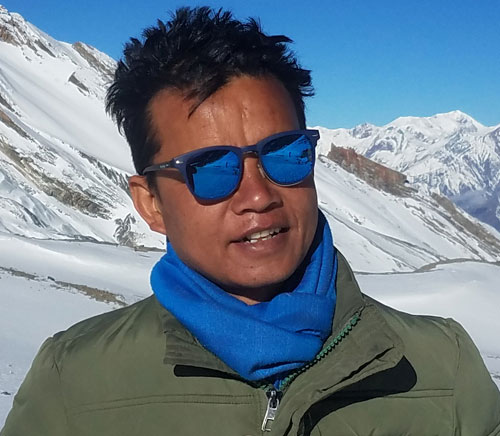
Mr. Tsering D. Sherpa
(National Mountain Leader)
Mountaineering, Treks & Tours
- +977-9862258888
(WhatsApp,Viber)7/24 - mytrek2@gmail.com
info@himalayansherpaadventure.com
RELATED TRIPS

Kathmandu Mount Everest Pokhara Tour
Kathmandu Mount Everest Pokhara Tour is a perfect combination ....

Kathmandu Pokhara Chitwan Tour
What will you obtained from this 10 days family tour of Kathmandu ....
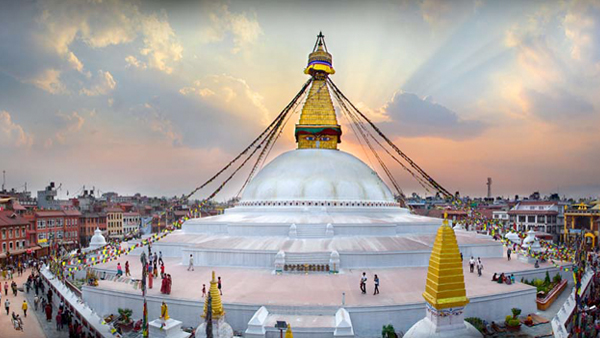
Kathmandu Sightseeing Tour
Kathmandu is the city is the gateway to the Nepalese Himalayas, ....

